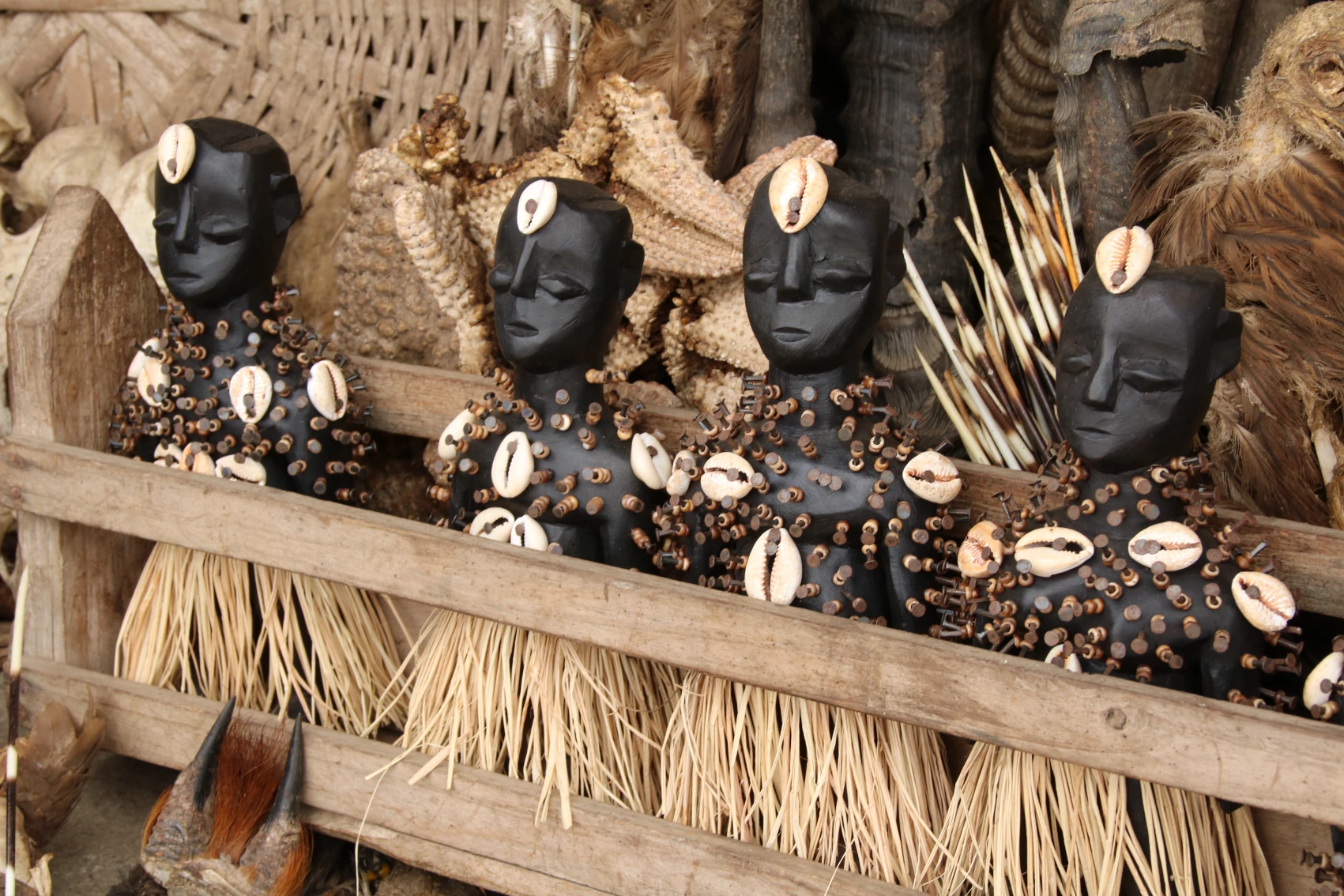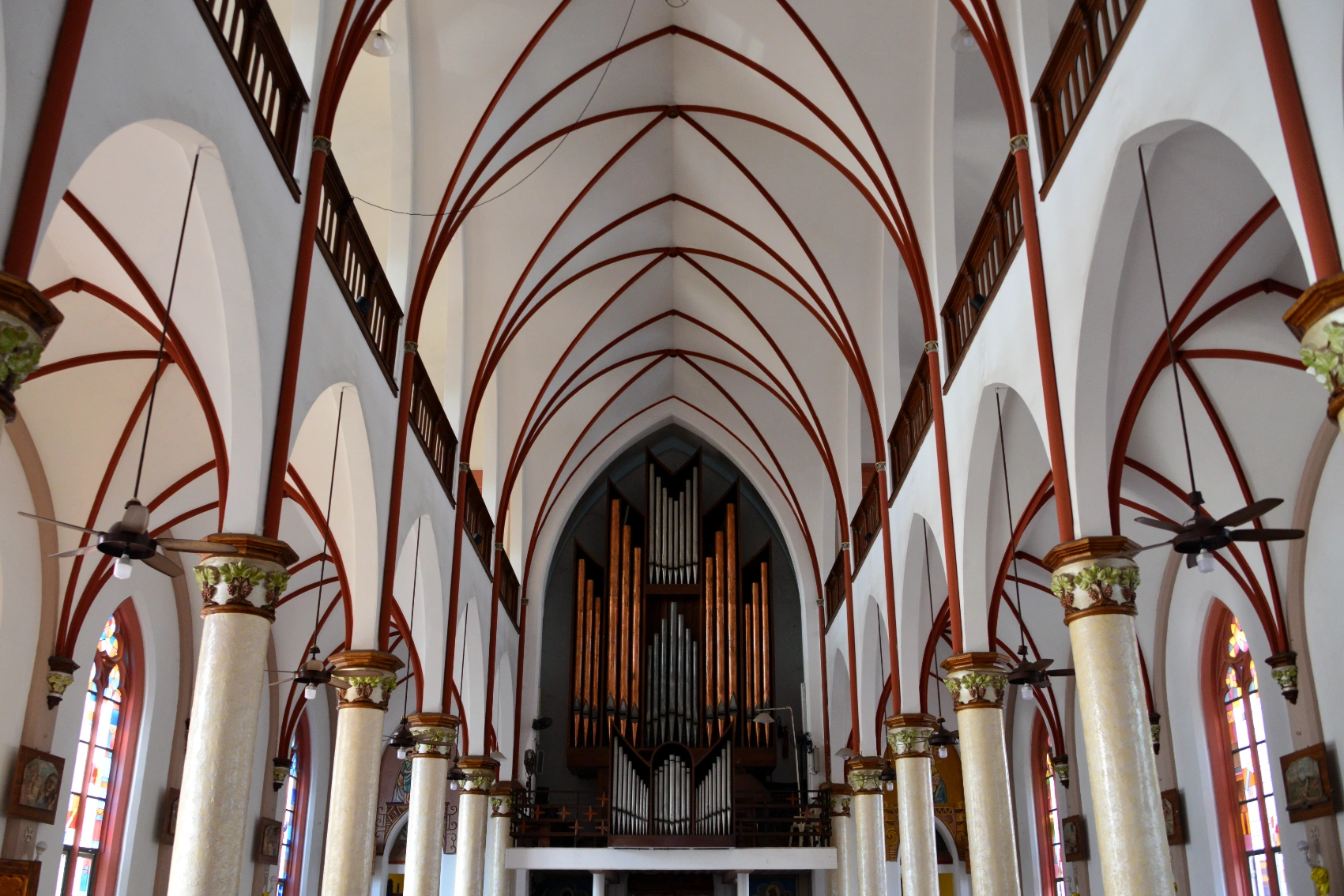From the smoky aroma of freshly grilled food to the friendly chat of market traders, Lomé is a city packed with energy. Nestled along the shores of the Gulf of Guinea, the capital of Togo is home to one of West Africa’s largest ports, but trade is only a small part of its story. Whether you're weaving through the colourful chaos of the Grand Marché or stepping into the world of ancient voodoo traditions, here’s a roundup of the best Lomé attractions to explore.
Trace the roots of Togo history
It may be only 112km (70 mi) wide, but Togo packs plenty of history into its borders. Little is known about the region before the 11th century, but up until the 16th century, waves of tribes arrived, from the Ewé in the east to the Mina and Guin in the west. They settled along the coast where trade was booming and the fish were plentiful. In the 15th century, the Portuguese arrived, and for the next 200 years, Togo became part of the infamous "Slave Coast," one of the main locations in the transatlantic slave trade. In 1884, Germany claimed Togo as a protectorate, but after World War I, control passed to the French.
On April 27, 1960, Togo gained independence, though peace didn’t last long. The first president, Sylvanus Olympio, was assassinated in 1963, followed by a string of short-lived leaders before General Gnassingbé Eyadéma took over in 1967. His rule lasted nearly four decades before his son, Faure Gnassingbé, stepped in, a political dynasty that continues today. Lomé has grown into a major trading centre thanks to a thriving port and a railway system first built by the Germans. Agriculture is the main industry in Togo’s economy, with cotton being one of its most important exports, alongside coffee and cocoa.
Check out Independence Monument
This towering sculpture was built to mark Togo’s independence from France in 1960. It shows a man breaking free from his chains while a seated woman holds a vase with the flame of independence. If you’re lucky enough to visit during a major celebration, you’ll see the flame lit in honour of the nation’s journey. Because it's set in the middle of a huge roundabout in the heart of the city, you may spend more time dodging the traffic to get there than you do admiring the monument, but navigating the whirlwind of cars only adds to the adventure.

Lose yourself in Lomé Grand Market
This sprawling maze of stalls is the beating heart of Togo’s capital and one of the largest markets in West Africa. It’s the place to go for handcrafted souvenirs. Amid the buzzing sound of voices and sizzling street food is a kaleidoscope of colours so vivid they put a sunset to shame. Put your haggling skills to use in the famous textile section known as the Nana Benz area. Come prepared, though, because French is the language of the land.
Experience it on: Ghana, Togo, & Benin: Castles, Coastlines and Voodoo Discoveries
Uncover the story of the Palais de Lomé
Once the seat of colonial governors and later the official presidential palace, the Palais de Lomé was left to crumble in the 1990s. Fast forward to 2019, and the palace was reborn as a modern art and cultural centre where everyone is welcome. Wander through its exhibition halls filled with contemporary African art, browse the bookstore, and grab a bite to eat at one of the on-site restaurants serving traditional Togolese food. Surrounded by 11 hectares (27 acres) of lush gardens, the palace grounds provide a peaceful retreat and are home to more than 500 plant species, 41 types of birds, and striking sculptures by local artists.
Dare to enter the Marché des Féticheurs
If visiting the world’s largest voodoo market is on your bucket list, then the Akodessawa Fetish Market is the place to go. It’s a treasure trove that needs to be seen to be believed. You’ll find everything from monkey skulls to powdered chameleons, and there’s even an on-site priest to mix you up a magic potion or protective charm. This fascinating market is a dive into Togo’s ancient traditions; just don’t expect a souvenir stall selling fridge magnets.

Soak up the sun at Plage de Lomé
The beauty of Lomé’s coast is on full display at Plage de Lomé, a golden stretch of sand and popular swimming spot where locals come to unwind. With more than 350m (1,148 ft) of beach at its widest point, there’s plenty of room for everyone. If you’re feeling brave, you can venture into the Atlantic’s choppy waters while fishers set sail in traditional wooden boats, hoping for a lucky catch. If you prefer dry land, grab a drink at one of the beachfront cafés and watch the world go by in the shade of the coconut trees.
Experience it for yourself on: West African Adventure: Highlights of Ghana, Togo & Benin
Visit the National Museum of Togo
Tucked away in the heart of Lomé, this tiny museum might not be the grandest building in the city, but what it lacks in size, it makes up for in character. Stepping inside is like wandering into a time capsule of Togolese culture. On display are musical instruments, traditional clothing, pottery, and ancient tools. It makes for a short but meaningful visit if you want to learn more about the country’s history.
Experience it on: Ghana, Togo, & Benin: Castles, Coastlines and Voodoo Discoveries
Step into Sacred Heart Cathedral Lomé
It’s hard to miss the Cathédrale du Sacré-Cœur, which towers over the Grand Marché. Its bright orange and white facade, twin bell towers, and giant rose window make it one of Lomé’s most striking landmarks. Built more than a century ago by German colonial rulers, the cathedral is a reminder of Togo’s layered history, one that shifted from German to French rule before independence. Services take place throughout the week, but if you want a peek at the interior, ask for permission to visit when it's empty. Once inside, admire the Gothic arches and colourful stained-glass windows up close.

Find peace at Colombe de la Paix
At the heart of Place de la Paix, surrounded by the chaotic swirl of Lomé’s traffic, stands Colombe de la Paix, a monument to peace and unity. A dove perched on a globe holding a laurel branch in its beak is a reminder of Togo’s resilience after past conflicts. Getting up close is an adventure in itself because navigating the busy roundabout requires skill and bravery. But once you’re there, the monument’s intricate design and cultural significance make the detour worthwhile.
Discover the West African Art Museum
This museum, also called the International Museum of the Gulf of Guinea, contains a huge collection of ancient art from across West and Central Africa. The wooden sculptures, masks, and artifacts are centuries old, and each has a story to tell. If you’re interested in finding out more, the museum's tour guides know their stuff and give fascinating insights into the objects’ origins and meanings. This collection is one of the most impressive displays of African art in the region.
Experience it for yourself on: West African Adventure: Highlights of Ghana, Togo & Benin
Relax at Royal Beach Lomé
Togo isn’t short of beaches to choose from, but Royal Beach Lomé serves up warm sands and fresh seafood in equal measure. Further out from the city centre, this tranquil slice of coastline is the perfect place to escape the noise and enjoy the soft Atlantic breeze. Amenities are sparse, so come prepared for some barefoot simplicity. When hunger strikes, head to the beachfront restaurant, where the combination of Togolese dishes and perfect ocean views is just what you need for a slow, sun-soaked afternoon.
Feel the spirit of West African voodoo
In Lomé, voodoo, also known as vodún, is an important part of West African culture. Practiced across Togo, Benin, Ghana, and Nigeria, it connects the community to their ancestors and nature. If the Fetish Market sparked your curiosity, try watching a voodoo ceremony, where rhythmic drumming, chanting, and dancing create a bridge between the physical and spiritual realms. Practitioners enter trances, guided by spirits that bring messages, healing, or protection. It’s the ideal opportunity to experience the soul of West African spirituality.























